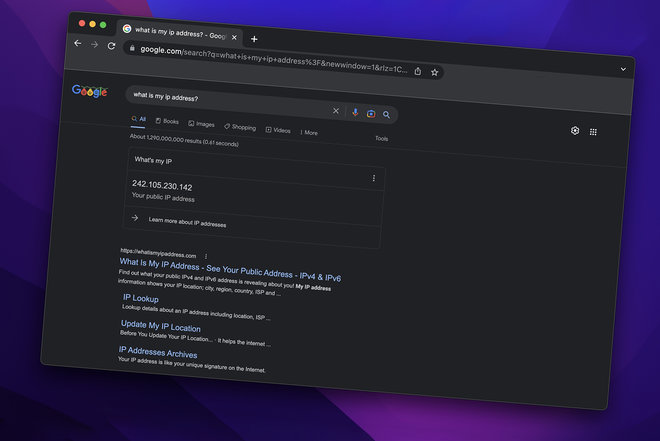
If you’re setting up VoIP or remote control software, you may need to know the public IP address of your router, which is assigned by your ISP. Whatever the reason may be, it’s handy to have your IP address. There is a lot of information attached to your public IP address, like your ISP’s name and your general location. Wondering how to find your IP address? It’s super easy.

How to find your router’s public IP address
The quickest, most simple way to find your public IP address is to simply search “What is my IP address?” on Google. But there are plenty of sites out there that will show you the exact same thing, such as WhatIsMyIP.com and IPLocation. By visiting the site, your router made a request and revealed your IP address. Some of these sites also show your ISP name and city and even have maps.
- Go to Google.com
- Search: What is my IP address?
Your public IP address should be the top result.
If your device is connected to the internet, and you can search “What is my IP address?”, then you can find your public IP address. We’ve tried it on Safari on a Mac, Edge on a Windows 11 laptop, Chrome on an iPhone and Android, and so on. It works every time.
Most phones and computers also allow you to see your IP address if you dive into Settings and go to the Wi-Fi menu.
Why do you need to know an IP address?
Knowing your public IP address can help you troubleshoot internet problems. It can help you discover whether you have a problem with a router or if it’s a specific device you’re trying to use. An IP address also can help you set up new devices and services on your network. If you want someone to administer your network from a remote location, you likely will need the IP address for that, too.
Can you hide your IP address?
A virtual private network (VPN) allows you to mask your IP address. I lets you access an intermediary network with a different IP address, essentially hiding your actual IP address. For more information about VPNs, see our separate guide.
